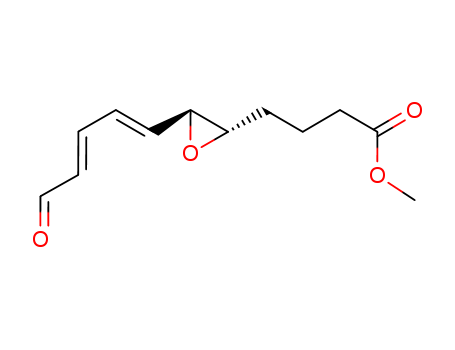- Chemical Name:methyl 4-[(2S,3S)-3-[(1E,3E)-5-oxopenta-1,3-dienyl]oxiran-2-yl]butanoate
- CAS No.:73958-00-6
- Molecular Formula:C12H16 O4
- Molecular Weight:224.257
- Hs Code.:
- DSSTox Substance ID:DTXSID701154285
- Nikkaji Number:J569.928B,J877.201K
- Mol file:73958-00-6.mol
Synonyms:73958-00-6;DTXSID701154285;(2S)-3alpha-(5-Oxo-1,3-pentadienyl)oxirane-2beta-butanoic acid methyl ester;3alpha-[(1E,3E)-5-Oxo-1,3-pentadienyl]oxirane-2beta-butanoic acid methyl ester;Methyl (2S,3S)-3-[(1E,3E)-5-oxo-1,3-pentadien-1-yl]-2-oxiranebutanoate;methyl 4-((2S,3S)-3-((1E,3E)-5-oxopenta-1,3-dienyl)oxiran-2-yl)butanoate





